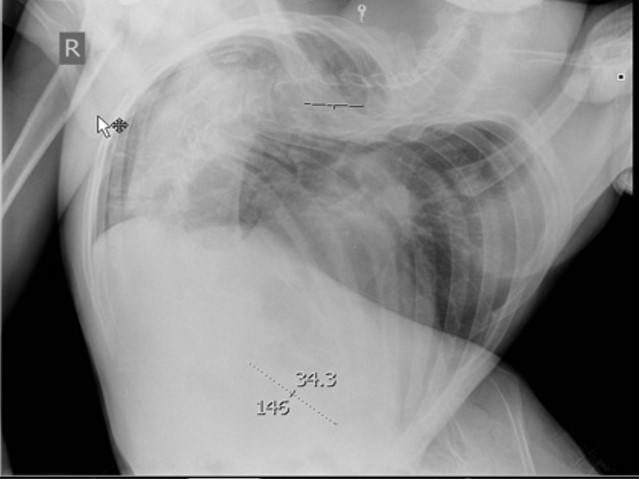Scoliosis Correction - Clinical Case
Clinical review
Features of the management of the perioperative period in patients with decompensated scoliosis through the eyes of an anesthesiologist.
Leading physician anesthesiologist-resuscitator Smirnov I.V.
Main problems
- Patient's physical condition
- Airway management
- Providing vascular access
- Intraoperative position on the operating table
- Hemostasiological disorders
- Cardiac complications
- Respiratory disorders.
Patient's physical condition




Airway Management - Insufficient Neck Extension

Possible solutions to the problem:
- Use of endoscopic techniques for intubation
- Thorough assessment of airway anatomy before surgery
- Predicting difficult intubation using the Mallampati scale.
Providing Vascular Access - Abnormal Arrangement of Vessels


Possible solutions to the problem:
- Use of ultrasound navigation for central venous catheter and arterial cannula placement.
- Intraoperative position on the operating table - increased pressure in the abdominal cavity and increased intraoperative bleeding due to increased pressure in the epidural space.

Possible solutions:
- Use of cushion rollers to relieve abdominal pressure.

Prolonged forced position
Increased risk of plexitis, compression damage to the eyes.Possible solutions to the problem:
- Careful positioning of the patient on the operating table
- Use of anatomical gel rolls.
Hemostasiological disorders - large volume of blood loss

Possible solutions to the problem:
- use of blood-saving technologies.
Cardiac complications
- Johns Hopkins Children's Center and Texas Scottish Rite Hospital for Children in Dallas (TSRHC)
- 2004-2014
- 2639 operations for scoliosis.
The risk of heart attack in children during spinal surgery is extremely low: attacks were recorded in only 11 patients (of which one patient died, ten children were successfully resuscitated) out of 2639 operated, which is less than 0.5%.
- Six out of eleven children who had a heart attack had neuromuscular disorders)
- In eight out of eleven cases, cardiac arrest was caused by electrolyte imbalance
- Allergic and anaphylactic reactions, arrhythmias, respiratory complications and airway problems.
Respiratory Disorders
- Decreased cough reflex
- Anatomical features of the respiratory tract
- Decreased muscle strength
Possible solutions:
- Using a cough and non-invasive ventilation.

Results obtained






